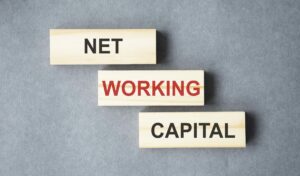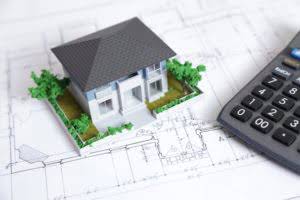
Double declining balance is sometimes also called the accelerated depreciation method. Businesses use accelerated methods when having assets that are more productive in their early years such as vehicles or other assets that lose their value quickly. Accelerated depreciation is any method of depreciation used double declining balance method for accounting or income tax purposes that allows greater depreciation expenses in the early years of the life of an asset. Accelerated depreciation methods, such as double declining balance (DDB), means there will be higher depreciation expenses in the first few years and lower expenses as the asset ages.
This is most frequently the case for things like cars and other vehicles but may also apply to business assets like computers, mobile devices and other electronics. This formula is best for companies with assets that lose greater value in the early years and that want larger depreciation deductions sooner. Continuing with the same numbers as the example above, in year 1 the company would have depreciation of $480,000 under the accelerated approach, but only $240,000 under the normal declining balance approach. If a company routinely recognizes gains on sales of assets, especially if those have a material impact on total net income, the financial reports should be investigated more thoroughly. Management that routinely keeps book value consistently lower than market value might also be doing other types of manipulation over time to massage the company’s results. It does not matter if the trailer could be sold for $80,000 or $65,000 at this point; on the balance sheet, it is worth $73,000.
Units-of-Production Depreciation Method
And if it’s your first time filing with this method, you may want to talk to an accountant to make sure you don’t make any costly mistakes. Double Declining Balance (DDB) depreciation is a method of accelerated depreciation that allows for greater depreciation expenses in the initial years of an asset’s life. Double declining balance (DDB) depreciation is an accelerated depreciation method. DDB depreciates the asset value at twice the rate of straight line depreciation. The double declining balance (DDB) depreciation method is an approach to accounting that involves depreciating certain assets at twice the rate outlined under straight-line depreciation. This results in depreciation being the highest in the first year of ownership and declining over time.
- In addition to this, learn more about ways to calculate the expense, and how depreciation impacts financial statements.
- The beginning of period (BoP) book value of the PP&E for Year 1 is linked to our purchase cost cell, i.e.
- Straight-line depreciation posts the same amount of expenses each accounting period (month or year).
- In addition, there is a loss of $8,000 recorded on the income statement because only $65,000 was received for the old trailer when its book value was $73,000.
- In other words, the major difference between straight line depreciation and reducing balance depreciation is timing.
Most companies use a single depreciation methodology for all of their assets. Thus, the methods used in calculating depreciation are typically industry-specific. Straight-line depreciation posts the same amount of expenses each accounting period (month or year). But depreciation https://www.bookstime.com/ using DDB and the units-of-production method may change each year. Let’s say Standard Manufacturing owns a large machine that they purchased for $270,000. The machine has a useful life of four years and is depreciated using the double-declining balance method.
What Is Depreciation?
Instead, the cost is placed as an asset onto the balance sheet and that value is steadily reduced over the useful life of the asset. This happens because of the matching principle from GAAP, which says expenses are recorded in the same accounting period as the revenue that is earned as a result of those expenses. Expected lifetime is another area where a change in depreciation will impact both the bottom line and the balance sheet. Suppose that the company is using the straight-line schedule originally described. After three years, the company changes the expected lifetime to a total of 15 years but keeps the salvage value the same. With a book value of $73,000 at this point (one does not go back and “correct” the depreciation applied so far when changing assumptions), there is $63,000 left to depreciate.
Depreciation in the year of disposal if the asset is sold before its final year of useful life is therefore equal to Carrying Value × Depreciation% × Time Factor. It is important to note that we apply the depreciation rate on the full cost rather than the depreciable cost (cost minus salvage value). The following section explains the step-by-step process for calculating the depreciation expense in the first year, mid-years, and the asset’s final year.
How to plan double declining balance depreciation
Declining balance depreciationThe declining balance method calculates more depreciation expense initially, and uses a percentage of the asset’s current book value, as opposed to its initial cost. So, the amount of depreciation declines over time, and continues until the salvage value is reached. First, determine the asset’s initial cost, its estimated salvage value at the end of its useful life, and its useful life span. Then, calculate the straight-line depreciation rate and double it to find the DDB rate. Multiply this rate by the asset’s book value at the beginning of each year to find that year’s depreciation expense. The double declining balance depreciation rate is twice what straight line depreciation is.

All of these uses contribute to the revenue those goods generate when they are sold, so it makes sense that the trailer’s value is charged a bit at a time against that revenue. However, one can see that how much expense to charge is a function of the assumptions made about both its lifetime and what it might be worth at the end of that lifetime. Depreciation is the means by which an asset’s book value is “used up” as it helps to generate revenue. In the case of our semi-trailer, such uses could be delivering goods to customers or transporting goods between warehouses and the manufacturing facility or retail outlets. All of these uses contribute to the revenue those goods generate when they are sold, so it makes sense that the trailer’s value be charged a bit at a time against that revenue.
The double declining balance depreciation method is a form of accelerated depreciation that doubles the regular depreciation approach. It is frequently used to depreciate fixed assets more heavily in the early years, which allows the company to defer income taxes to later years. The double-declining balance depreciation (DDB) method, also known as the reducing balance method, is one of two common methods a business uses to account for the expense of a long-lived asset. Similarly, compared to the standard declining balance method, the double-declining method depreciates assets twice as quickly. While the straight-line method reduces profit by the same amount each accounting period, the other two methods cause a company’s profit to fluctuate with all else being equal.
